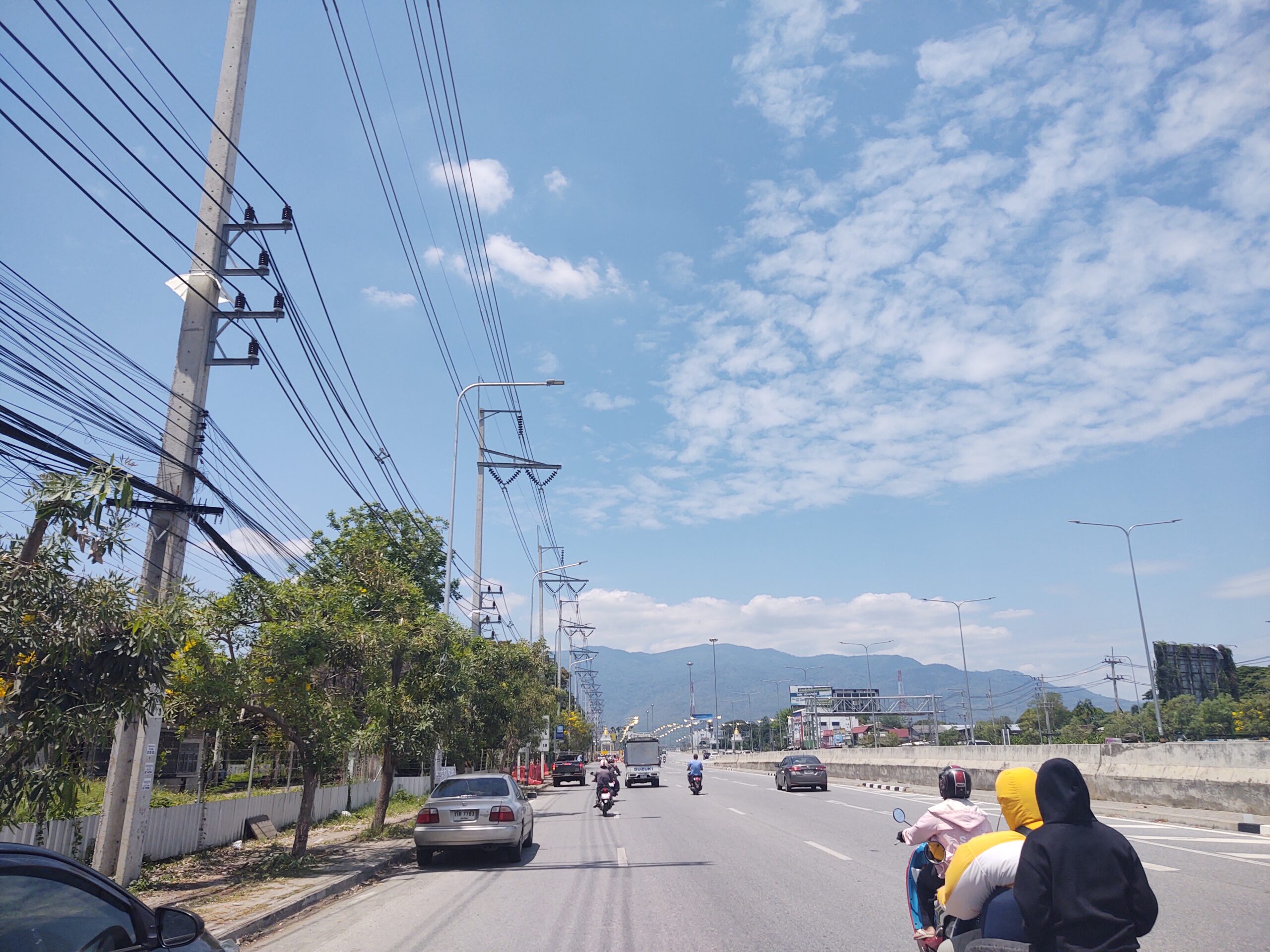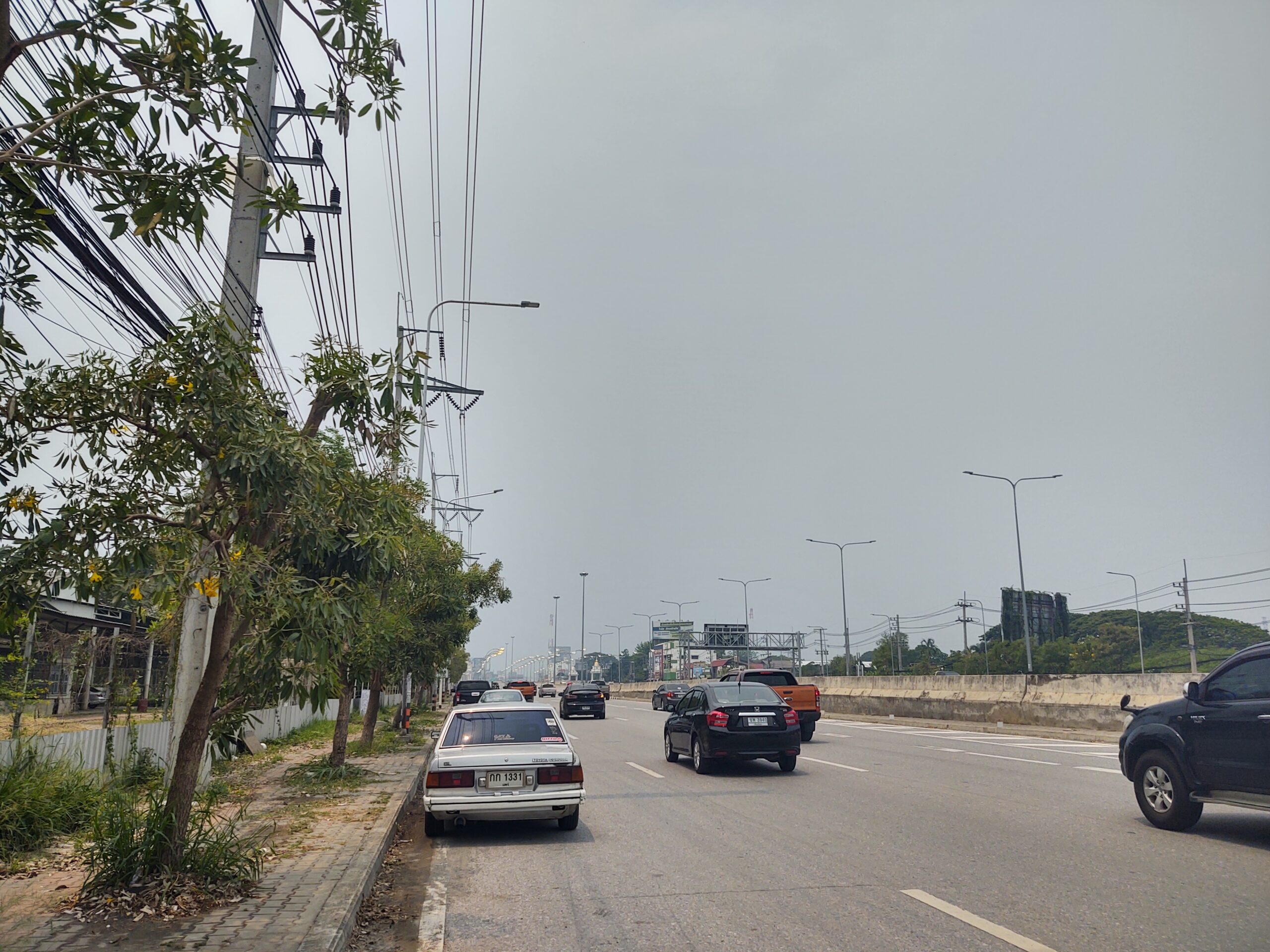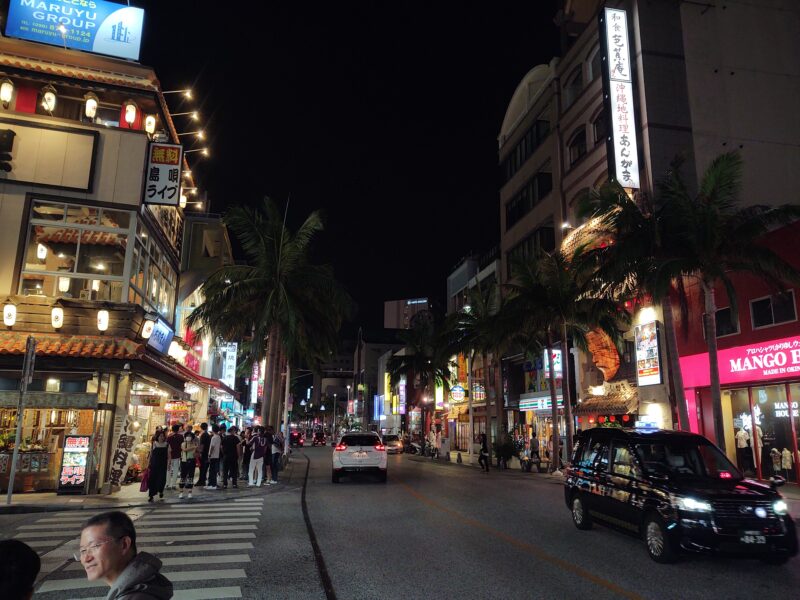The weather has been…weird.
“Burning season” comes to Chiang Mai around February, March, and April every year. At the end of the dry season, farmers in the agricultural regions throughout northern Thailand get ready to plant their new crop for the year. In preparation, they burn their fields, filling the air with smoke.
The crowded city is packed full of gas-guzzling cars year-round, which certainly doesn’t help. But it’s thought that the crop-burning during these months is what causes Chiang Mai — a sleepy, nonindustrial city with only around a million inhabitants — to start making cameos at the top of global air pollution lists.
PM2.5 (small particulate matter) data for 2019 in Chiang Mai. A higher number (and darker color) means more pollution. Notice the huge jump from mid-February until mid-May. Image credit.
Even though I wanted to live in Chiang Mai, I didn’t expect to stay here through the burning season, as I was anticipating and dreading the horrible air quality. I had planned on staying for only a few months and then taking a trip to the islands, or going to Cambodia, perhaps — as many people do this time of year. But for better or worse, here I am.
And believe it or not, it hasn’t been too bad. In fact, it’s been unusually clear this burning season. I got lucky. This year has been a freak anomaly with a relatively clear sky. Some days, you can even see Doi Suthep mountain from downtown — while this is perfectly normal in January, it is practically unheard of during March and April.
PM2.5 data so far for 2022 in Chiang Mai. This year’s February and March are the cleanest, least-polluted on record. Image credit.
So, the obvious question is: why?*
*Disclaimer/spoiler alert — this article is not about climate change.
Well, Maybe If We Burned Less Fields…
If only it were that easy.
In fact, Thailand banned field-burning in 2019, but the ban is largely ignored and often circumvented. Burning is still a very common practice, and seems unaffected by the ban. The laws haven’t changed this year compared to previous years, so this doesn’t explain why suddenly the air quality is so much better.
Nor is it likely that social or economic norms have changed. Farmers burn because it’s easy and inexpensive. They need to clear the field to make way for the next crop, and machinery to clear the farms manually is expensive and rarely subsidized. Machines are used less than 10% of the time; burning is a far-favored alternative.
Not only that, but for sugar cane and rice farms, burning the crop before harvest actually makes harvesting significantly easier by removing weeds and excess, colloquially called “clearing the stubble.” An estimated 60-70% of sugar cane is burned during production in Thailand.
People have gotten used to the poor air quality during burning season (also called “smoky season”) and mostly, people take it for granted. The negative health impacts of pollution, while well-studied and understood, are seldom acute; rather, they come from long-term exposure. So even though air pollution lowers life expectancy by two years in Thailand, nobody is freaking out that the haze outside is going to kill them, say, tomorrow. With that in mind, taking the expensive steps to reduce pollution is not seen as an urgent political or economic priority.
Comparing Thailand’s pollution standards to other countries and the health standard of the World Health Organization (WHO). “Normal” air quality in Thailand is twice as polluted as WHO’s health standard, and significantly greater than developed nations. Image credit.
On a short drive outside town these days, it’s not uncommon to see a small fire by the side of the road, with farmers not even bothering with discretion. It would seem that simply burning less is not the reason that there is less pollution this year, especially considering that the ban laws are the same as previous years, when pollution was far worse. Still, it’s hard to estimate how effective the bans have been since their start in 2019.
A Change Of Seasons
A much more convincing argument for the lack of pollution can come from understanding Thailand’s climate. Thailand has, essentially, three seasons:
Cool season is from November to February. It’s relatively dry and relatively cool. (Although, as a foreigner, I still found “cool season” to be quite hot, with daily high temperatures around 80°F and daily lows around 60°F. But generally, it’s nice weather.)
Hot season is from February to May. And it is hot. Most days, the temperature soars above 100°F, and with high humidity, the country turns into a sauna that you can’t escape without the help of an overworked air conditioning unit. My girlfriend jokingly calls it “the heat of hell.”
Wet season then comes from May to October. The monsoons endlessly roll in and rain seems to fall daily, mostly in small spurts but occasionally in giant, torrential storms that can last for days. The temperature drops a bit, and the water and wind is a nice respite from the heat.
Average monthly rainfall in Chiang Mai. Wet season starts around May and peaks in August and September, each with a whopping 8 inches of rainfall. Image credit.
It doesn’t rain much outside of the wet season, so the cool and hot seasons can be combined into dry season. Burning season, from February to April, coincides with hot (and dry) season.
Raining In Dry Season
If you recall the air quality chart from 2019, you’ll notice that throughout wet season, the air quality was impeccable. This is actually quite usual and perhaps expected — June through November always brings the best air quality to Chiang Mai.
Scientists have shown that rainfall can help improve air quality by removing particulate matter from the air — a sort of “cleaning” effect. After the rain, particulate matter builds up again, until it is cleaned once more in the next storm. The more pollution in the air, the more dramatic the cleaning effect. This could explain why the wet season has much less pollution.


It doesn’t usually rain in Chiang Mai from November through March. Occasionally, a storm will roll in, but it doesn’t last long, and it doesn’t happen often. This year, though, has been different.
January — right in the middle of dry season — unusually had two storms. February and March each had several storms as well. And as I sit here writing this on April 2nd sipping tea and snacking on dried dates, we’ve been in a raging downpour for the past 12 hours.
Precipitation data has been surprisingly hard to find, perhaps because I’m not used to searching for it, but the Thailand Meteorological Department puts out a helpful monthly weather report. Their February 2022 report begins: “The average total rainfall over Thailand in February was 102.6 mm, that was 82.3 mm (405%) higher than normal and monthly mean temperature was 26.1°C with 0.3°C below normal…”
Four hundred five percent more rainfall than normal in February?! A polluted month that almost never sees any rain? No wonder, then, why it suddenly was the cleanest February on record, with clear-ish skies every other day. The January report similarly mentions unusual rainfalls, with 96% more volume than usual in the northern region.
The report for March hasn’t been released yet, but it was quite rainy as well. Surely the report will make a similar note of unusually high rainfalls during the typical “dry” season.
If you compare the major storms of March, on the 8th and from the 21st-24th, then you’ll also notice these are when the pollution drops most.
PM2.5 data for March 2022 in Chiang Mai, comparing storm dates with reductions in pollution.
After the storm, there is a clear decrease in pollution, followed by an increase. This is the same cleaning-effect of rain that was observed before. After the rain clears the air, pollution slowly creeps back in, whether it’s from cars or field-burning or both, until the next storm.
I’ll look forward to the Thai Meteorological Department’s next reports — perhaps they’ll even mention the decrease in pollution, or just the higher-than-usual rainfall. Until then, I’ll be enjoying the clearer skies and fresher air. And I’m pretty sure it’s thanks to the rain.
Heavy Weather
While I wasn’t expecting to find myself in “the heat of hell” of northern Thailand’s summer, I’m glad that the pollution isn’t so bad. The past few months certainly could have been a lot worse. I’ll go do a little rain dance now.
Singing in the rain,
Andrew
P.S. I’m in a band called Burning Season. Despite the rain, we’ve been having a pretty smoking year, with several hot shows around town.

